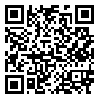Volume 7, Issue 6 (2-2012)
J Health Syst Res 2012, 7(6): 0-0 |
Back to browse issues page
Download citation:
BibTeX | RIS | EndNote | Medlars | ProCite | Reference Manager | RefWorks
Send citation to:



BibTeX | RIS | EndNote | Medlars | ProCite | Reference Manager | RefWorks
Send citation to:
هدي رحيميفرد, حميدرضا حيدري, ياسر تبرايي, محمد حاجآقازاده, حسين مرادي, دانيال عمراني, et al . تعیین شیوع اختلالات اسکلتی- عضلانی و عوامل مؤثر بر آن در بین کارگران کارگاههای تهیه مبل خام به روش ارزیابی سریع کل بدن (REBA). J Health Syst Res 2012; 7 (6)
URL: http://hsr.mui.ac.ir/article-1-324-en.html
URL: http://hsr.mui.ac.ir/article-1-324-en.html
هدي رحيميفرد1 
 , حميدرضا حيدري2
, حميدرضا حيدري2 
 , ياسر تبرايي3
, ياسر تبرايي3 
 , محمد حاجآقازاده4
, محمد حاجآقازاده4 
 , حسين مرادي5
, حسين مرادي5 
 , دانيال عمراني5
, دانيال عمراني5 
 , عليرضا دري5
, عليرضا دري5 
 , محمد جواد کاظمآبادي5
, محمد جواد کاظمآبادي5 


 , حميدرضا حيدري2
, حميدرضا حيدري2 
 , ياسر تبرايي3
, ياسر تبرايي3 
 , محمد حاجآقازاده4
, محمد حاجآقازاده4 
 , حسين مرادي5
, حسين مرادي5 
 , دانيال عمراني5
, دانيال عمراني5 
 , عليرضا دري5
, عليرضا دري5 
 , محمد جواد کاظمآبادي5
, محمد جواد کاظمآبادي5 

1- Lecturer, Department of Occupational Health, School of Public Health, University of Qom, Qom, Iran
2- Lecture, Department of Occupational Health, School of Public Health, University of Qom, Qom, Iran. And PhD student in Occupational Health, Tehran University of Medical Sciences, Tehran , Iran
3- Lecturer, Department of Public Health, School of Public Health, University of Sabzevar, Sabzevar, Iran
4- PhD Candidate, Department of Occupational Health, Health Research Institute and School of Public Health, Tehran University of Medical Sciences, Tehran, Iran
5- BSc Student, Department of Occupational Health, School of Public Health, University of Qom, Qom, Iran
2- Lecture, Department of Occupational Health, School of Public Health, University of Qom, Qom, Iran. And PhD student in Occupational Health, Tehran University of Medical Sciences, Tehran , Iran
3- Lecturer, Department of Public Health, School of Public Health, University of Sabzevar, Sabzevar, Iran
4- PhD Candidate, Department of Occupational Health, Health Research Institute and School of Public Health, Tehran University of Medical Sciences, Tehran, Iran
5- BSc Student, Department of Occupational Health, School of Public Health, University of Qom, Qom, Iran
Abstract: (1321 Views)
Background: Furniture industry is known as a part of semi-heavy industry in Iran. The role of labour force is inevitable in production processes. Therefore risk factors affecting occupational musculoskeletal disorders in this industry must be evaluate. Identification and assessment of these factors is important measure to prevention and controlling of musculoskeletal disorders. Production performance in the furniture manufacturing activities is almost accompanied by transportation (heavy, large and rigid load). Since there are so many furniture makers in Qom, this study was chosen for the evaluation and determination of risk factors inducing musculoskeletal disorders in this industry. Methods: In this cross- sectional study, after identifying work stations and work tasks in furniture manufacturing workplaces, Nordic and demographics questionnaires were used for the determination of prevalence of musculoskeletal disorders and individual characteristics, respectively. Also, for evaluation of risk factors inducing musculoskeletal disorders was used Rapid Entire Body Assessment (REBA) method. After all, the obtained data were analyzed using statistical methods including: t-test, and chi-square and fisher__AWT_QUOTE__s exact tests. Findings: The results demonstrated that the prevalence of musculoskeletal disorders in this industry is high. Also, job tenure and work duration are the main important factors in prevalence of musculoskeletal disorders. On the other hand, evaluation of work postures indicated that duty type and work posture were the main important factors in prevalence of musculoskeletal disorders, too. Finally, by applying the standard tables of REBA method, action categories of correction strategies were determined and after identifying risk factors, control strategies were recommended. Conclusion: The results of this study demonstrated that the prevalence of musculoskeletal disorders in back, knee, leg, hand and hand wrist has been high and body postures of these workers should be improved. More training and instructions are needed to have good position in the workplaces. Therefore, it is suggested that by performing correction strategies in order to optimization of work stations design, ergonomic condition, and periodic training of workers for a long time, improve their workplaces.
Type of Study: Research |
Subject:
education health and promotion
Received: 2020/07/16 | Accepted: 2023/03/4 | Published: 2023/03/4
Received: 2020/07/16 | Accepted: 2023/03/4 | Published: 2023/03/4
| Rights and permissions | |
 |
This work is licensed under a Creative Commons Attribution-NonCommercial 4.0 International License. |



